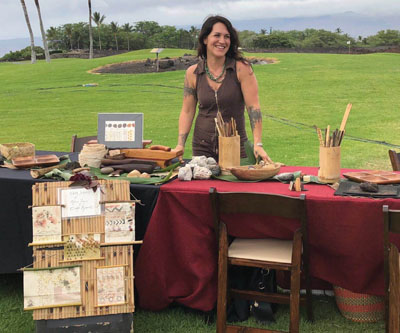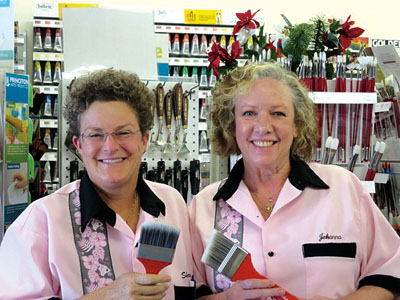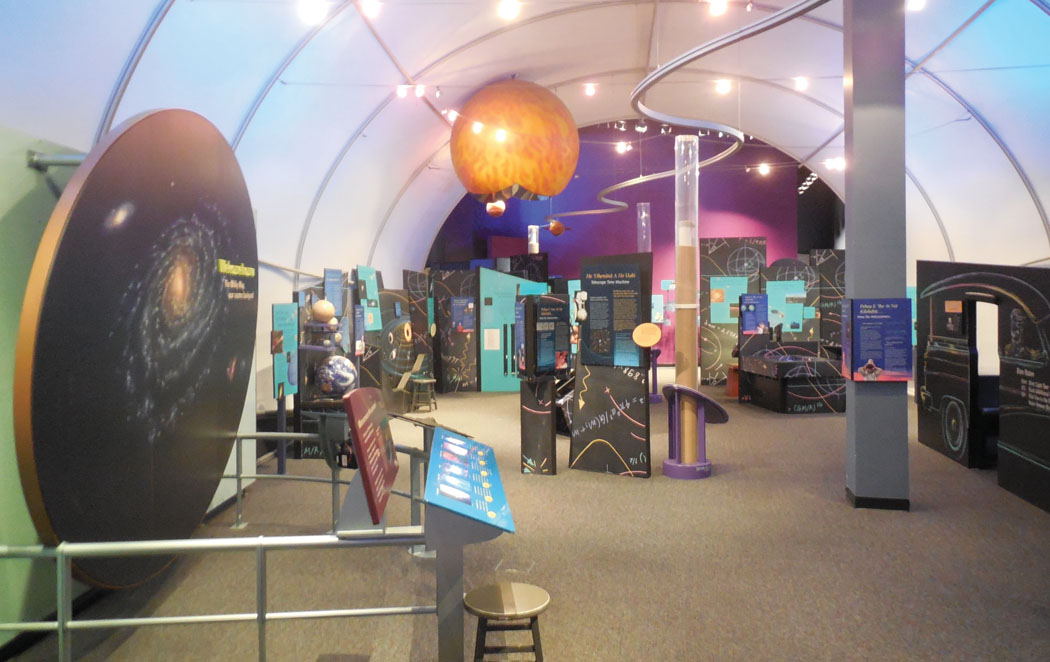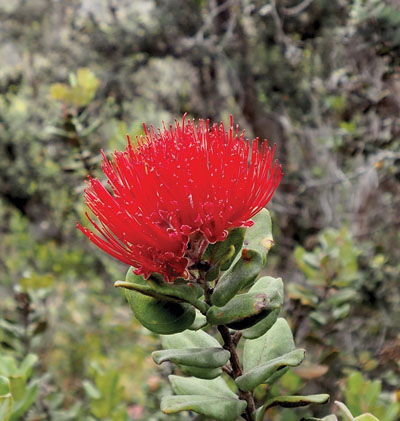
Hawaiian Islands Land Trust: A Legacy of Land

By Brittany P. Anderson
There is a place on Hawai‘i Island where clouds come down from the sky to walk amongst the trees. Noe kolo (creeping mist) overcomes the jungle as an ‘i‘iwi (scarlet honeycreeper) call rings out—its location masked as white envelops the forest. Here, at the Kona Cloud Forest in the cool upcountry Kaloko area, this scene unfolds daily and thanks to the conservation easement by Hawaiian Islands Land Trust, it will run until the end of time.
The Hawaiian Islands Land Trust, HILT, operates statewide, conserving lands that promote the long-term well being of Hawai‘i. On the Island of Hawai‘i, HILT preserves wildlife habitats, agricultural resources, and areas of cultural and historical importance through perpetual conservation easements. These easements continue forever, ensuring a permanent endowment of land for generations to come.
Mālama ‘Āina, Aloha ‘Āina (Care for the Land, Love the Land)
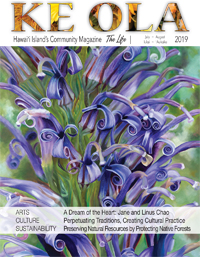
HILT was founded in January 2011 when four individual island trusts merged, taking Hawai‘i land conservation to new heights. Together, Hawai‘i Island Land Trust, Maui Coastal Land Trust, O‘ahu Land Trust, and Kaua‘i Public Land Trust, became Hawaiian Islands Land Trust. The now-combined trust protects over 18,000 acres across Hawai‘i Island, Maui, O‘ahu, and Kaua‘i.
The rich fertile soils of Hawai‘i Island, the open shorelines along its rocky coast, and its dense forests sustain us—providing food, recreation, and supporting traditional cultural expression. It is this fundamental essence of Hawai‘i Island that HILT so intensely aims to preserve.
In Volcano Village, several landowners felt the conservation call to action. Working with HILT and professional resource managers, these residents aim to protect the unique Volcano habitat—home to some of Hawai‘i Island’s threatened rare native birds and plants.
The patchwork quilt of conservation easements throughout the Volcano area create safe havens for birds like the flaming red ‘apapane (a native Hawaiian species of honeycreeper) and blue-hued ‘ōma‘o (native Hawaiian thrush). Known as the Kīpuka Mosaic, the smallest protected area is a forested 0.4 acre and the largest are 3 acres. Each dedicated conservation inch of the Kīpuka Mosaic works towards the goal of connecting Kahauale‘a Natural Area Reserve, ‘Ōla‘a Forest Reserve, and Hawai‘i Volcanoes National Park, so animals, insects, and plants are able to move freely between critical habitats along Maunaloa’s southern slope.

“We started the project under the Hawai‘i Island Land Trust. When we became one land trust, we inherited the first land project in the area. We saw it as an incredibly important project that we’ve continued to this day,” says Scott Fisher, the associate executive director of conservation, and chief conservation officer at Hawaiian Islands Land Trust.
Hawaiian Islands Land Trust is dedicated to continued efforts in preserving native natural forest lands island-wide. In 2015 HILT added over 41 acres of wildlife habitat in Pa‘auilo. Located mauka (mountainside) on Hawai‘i Island’s Hāmākua Coast, Kaye Lundburg and her family dedicate their efforts to reforesting their property with native plant species.
“There are lots of people like Kaye—people get the satisfaction of leaving a wonderful legacy behind. She has a deep commitment to the land and has been an inspiration for others on the Hāmākua Coast,” Scott says, reflecting back on the project.
Under a canopy of young native ‘ōhi‘a and koa trees, indigenous understory plants are re-introduced, fostering Kaye’s vision of conservation. In working with Hawaiian Islands Land Trust, the family is reassured their stewardship will continue, protecting the burgeoning forest from future development.
He ali‘i ka ‘āina; he kauwā ke kanaka (The land is a chief; man is its servant)
Hawaiian Islands Land Trust is working to create an enduring agricultural legacy on Hawai‘i Island, supporting sustainability by protecting rich agricultural lands. “Sustainability is the heart of what we do,” Scott explains. Despite the abundance of food available on the island, agricultural lands are being rapidly developed, putting our food security at greater risk. HILT aims to partner with farmers to keep their lands producing while protecting it from future development, both of which are vital to Hawai‘i Island’s future.
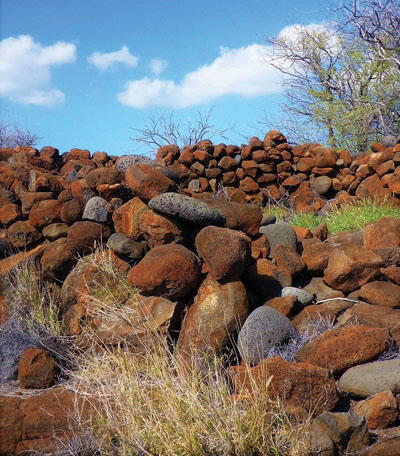
Up an old Ka‘ū road where the wind is called out to by name, Kuehu Lepo (dust-raising wind), HILT purchased a conservation easement for a 211-acre macadamia nut farm. Owned and farmed by the Grassman family, in purchasing the easement it ensures the land will be available for farming indefinitely.
“The Grassmans are so dedicated to seeing the value in conservation of Ka‘ū. They farm using innovative farm management techniques, and are really great people. Probably one of the nicest aspects of my job is working with and learning from the landowners that have so much passion for the land,” Scott says, reflecting on the project.
One tool HILT uses to preserve land is through conservation easements. It is permanent encumbrance on the land so that whoever owns that land must adhere to the conservation easement. “Our policy is to work with willing landowners, and those landowners become our collaborators,” Scott states.
HILT works with individual landowners, community organizations, and local government to protect what we love, and seek, from Hawai‘i Island’s natural landscape. The trust has several options for placing a conservation easement on a property. Depending on acreage and potential for development, landowners may wish to donate the loss in value, which is tax deductible with HILT’s 501c3 status, or the easement can be purchased. Under certain circumstances HILT may also purchase land. The trust currently owns and maintains five such preserves though none are located on Hawai‘i Island.
“We look at lands that are threatened with development. If we don’t step in, it will be purchased by someone and those conservation goals will be lost forever,” Scott explains.
Hawaiian Islands Land Trust approaches each partnership as their kuleana (responsibility), with great respect for the diverse landscapes of our island home, and reflection on their individual impacts on future generations. With a foot in the past, one in the present, and a vision for the future, HILT ensures that the island we pass forward is better than the way we received it. This sentiment rings true not just for wildlife habitats and agriculture, but it also applies to culturally significant locations.

Mai nā kūpuna mai (From the ancestors)
The shoreline of North Kohala with its rugged black lava and twisted kiawe trees holds substantial importance for Hawaiian culture. The area was once a thriving pre-contact community, with boundaries that extended to the horizon. The Kaiholena ahupua‘a (district) was once so sought after that during the mehele of 1848, two chiefs traded their ancestral lands on O‘ahu for the rights to parcels in Kaiholena.
Traces of the village can still be found today including burial sites, house structures, and more than 200 sites that qualify for the National Register of Historic Places. Places of such rich cultural and historic importance provide a deep ancestral connection as well as offer the ability to study pre-contact Hawaiian civilization.
Only a few years ago, all these ancient sites were on the verge of being sold and lost forever. Kohala residents, community volunteers, HILT, and government agencies worked together and, in 2015, announced the permanent protection of 35 acres of Kaiholena South, along the North Kohala coastline.
“We want to work to protect these special places within our community and ensure the values of the community are mirrored in the conservation goals for the area,” Scott says, looking back on the project.

Kaiholena South contains a portion of the Ala Kahakai Trail, a footpath used by ancient Hawaiians, connecting over 200 ahupua‘a. Today, a walk along the Ala Kahakai Trail in Kaiholena South is possible thanks to the steadfast work by community members, keeping the connection to the ancestors alive for a thousand more generations.
The Hawaiian Islands Land Trust serves the land and the people who love it with unending dedication. By keeping the legacy of the land alive, indigenous species may flourish, farmers can continue to farm, and the culturally significant relics of Kaiholena may keep their place in the sun forever.
There are ways to participate in land conservation beyond dedicating easements. HILT encourages communities to get involved through their Talk Story on the Land free guided hikes and volunteer opportunities. This December the Hawaii Island Paina will be held at Merriman’s in Waimea, for a farm-to-table culinary event to benefit Hawaiian Islands Land Trust.
As I plant new avocado trees on our farm, I can’t help but wonder what it would be like knowing my farm would be able to feed the people of our island until the end of time. The words of Leimomi Akana, author of the book Hānau ka Ua: Hawaiian Rain Names, play over in my head, “Our kūpuna thrived, and by caring for the ‘āina created abundance. As their descendants, we must strive to do the same.” With Hawaiian Islands Land Trust, we will be remembered as the kūpuna that preserved Hawai‘i Island, passing it on better than we received it. ❖
For more information: hilt.org
Mahalo Ahualoa Farms—Local Agriculture Story Sponsor
